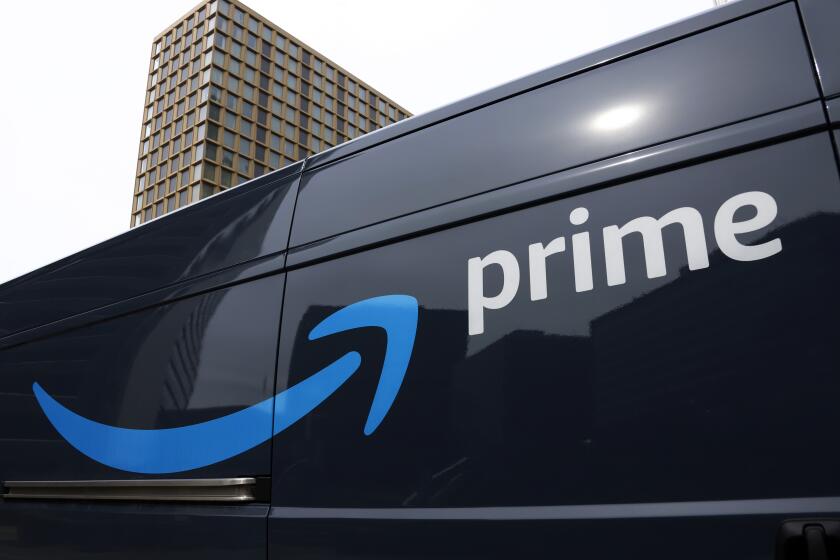Opinion: How a Paramount-Warner Bros. Discovery merger could test the new world of antitrust

- Share via
Amid speculation that Warner Bros. Discovery and Paramount will pursue a merger, it’s worth asking — would the antitrust agencies try to block the deal? That question poses an interesting test for the new Joint Merger Guidelines released by the Federal Trade Commission and Justice Department last month.
The guidelines represent the most important articulation of American antitrust policy, and they come at a time of public recognition that antitrust law has failed to stop relentless concentration of economic power in just a few firms. One of the biggest questions up for grabs is whether we should abandon the consumer welfare standard that has dominated — or some would say, decimated — antitrust law for decades.
Executives at Warner Bros. Discovery and Paramount have met to discuss a potential merger. Here’s what that could mean for Hollywood.
The standard asks courts to protect competition in the name of consumers who suffer at the hands of sellers with the market power to raise prices or erode product quality. It also protects people and companies forced to sell to buyers with market power who can unfairly suppress prices for suppliers and — perhaps most relevant to any Warner-Paramount merger that would consolidate employers in the entertainment industry — keep down wages for workers.
Some critics of the consumer welfare standard would broaden the goals of antitrust laws to other social goals served by competition, such as safeguarding democracy or protecting little-guy competitors for their own sake. The guidelines therefore could have abandoned the consumer welfare standard in favor of “kitchen sink” antitrust law that would leave the courts balancing too many conflicting aims.
But fortunately for the prospect of meaningful antitrust reform, the new guidelines remain focused on how monopoly power can harm consumers and workers. There is just one key twist: While the old consumer welfare standard considered only short-term impacts, the new policy takes a long view. It addresses anti-competitive actions by companies that can inflict serious long-term harm even if they have little immediate effect on consumers and workers.
The impact of this shift could be profound. Consider a potential Paramount-Warner Bros. Discovery deal. Under the old guidelines, the merged firm may be seen as providing more robust short-term competition against larger fish in their pond such as Netflix and Disney+. A long-term view, however, would see the creation of yet another media giant as making it easier for the industry to coordinate, not compete, in setting wages and laying off workers or fixing high prices for access to content. And a more concentrated industry could operate long term in a vicious cycle because it would make it even harder for new companies to enter the market and shake things up.
The Federal Trade Commission and 17 states allege that Amazon is an illegal monopoly that raises prices and stifles competition. Can this lawsuit weaken Amazon’s online dominance?
The new guidelines’ focus on the long term would also take a hard look at the vertical aspects of any Paramount-Warner merger, asking whether the merged firm would have control over a product their rivals need to compete. Another media mega-merger between AT&T and Time Warner in 2017 survived the old short-term standard because the court didn’t focus on the long-term effects of vertical integration between content creators and distributors of that content. The updated guidelines call for a different approach.
Thinking strategically about how firms compete in the long term will have an impact beyond merger law to other areas of antitrust enforcement, such as monopolization. Making short-term consumer benefit the heart of a monopolization case — where courts must decide whether a firm’s conduct primarily benefits its consumers or boosts its market power — is how we ended up with giants such as Google, Apple, Amazon and Meta, whose ascent to extreme market power, and resulting consumer harm, may have been preventable with a longer-term view of consumer welfare.
This new approach requires some trade-offs. The rate of error in over- and under-enforcement goes up the further into the future the courts try to predict harm. But antitrust law has for too long treated potential overenforcement as catastrophic and underenforcement as essentially costless, believing that markets self-correct and erode monopoly power naturally, which runs contrary to economic fact and to common sense. Years of courts predicting — incorrectly — that doing nothing was good for consumers have yielded durable monopoly power that shows no sign of abating.
And what about safeguarding democracy from the harms of monopoly and protecting smaller producers? Have regulators abandoned these goals? The question is especially pressing when it comes to a potential Paramount-Warner Bros. Discovery merger that could further consolidate news sources and crush the little guys. The standard of protecting long-term consumer welfare may support those goals too. If we cut back on monopolists’ ability to foreclose entry and squash nascent competition, we will likely end up protecting smaller outfits. And all of these measures will make monopolies less stable over time, reducing their power to distort the democratic process through lobbying and control of information.
Under the new guidelines, a potential Warner Bros. Discovery-Paramount deal would present regulators with familiar questions about whether streaming subscribers, movie-goers, writers and content creators would be better or worse off after the merger. But their time horizon has changed, enabling them to assess whether such an entertainment behemoth would hinder competitive entry, innovation, content improvement and cheaper pricing down the line. If we are serious about consumer and worker welfare, these are the right questions to ask.
Rebecca Haw Allensworth is an antitrust professor at Vanderbilt Law School.
More to Read
A cure for the common opinion
Get thought-provoking perspectives with our weekly newsletter.
You may occasionally receive promotional content from the Los Angeles Times.










